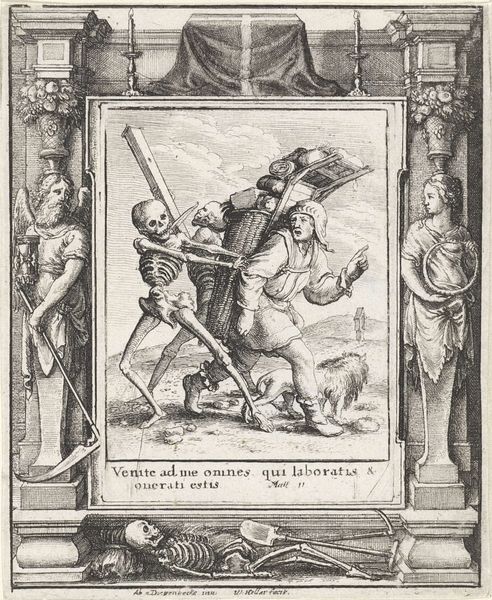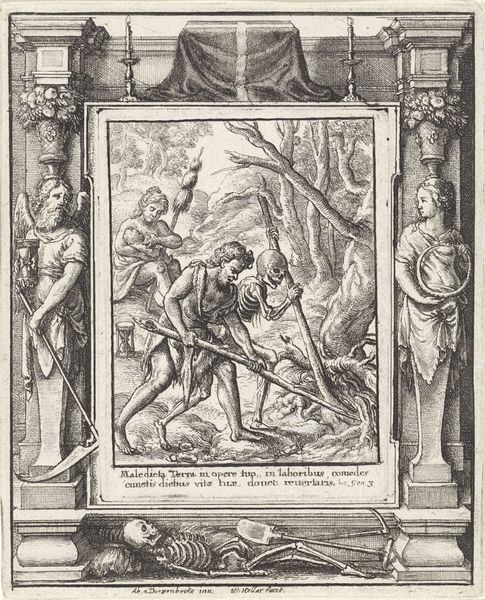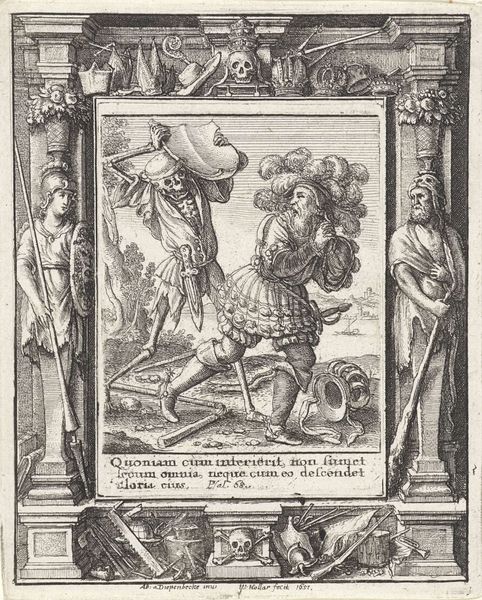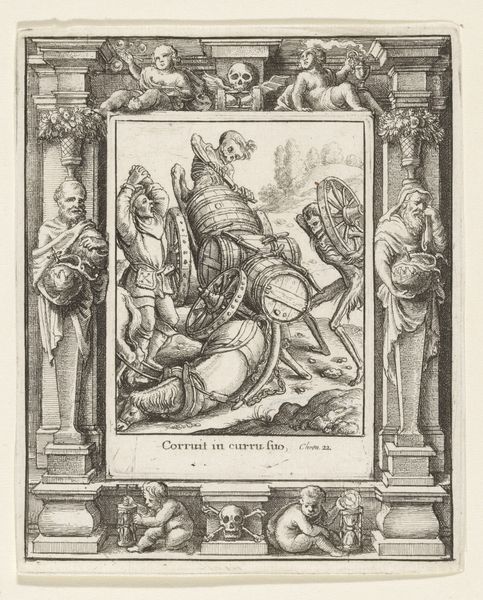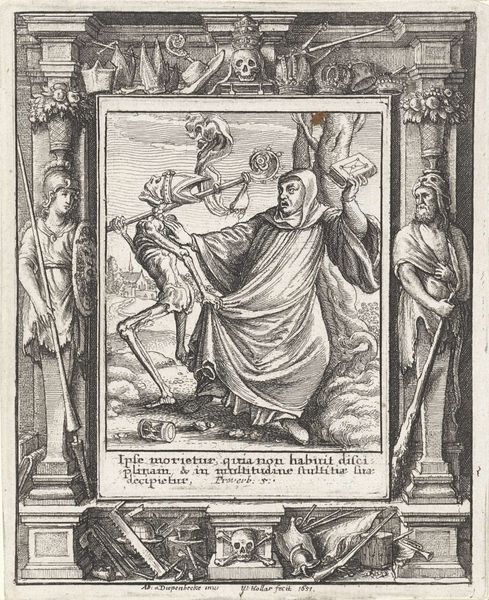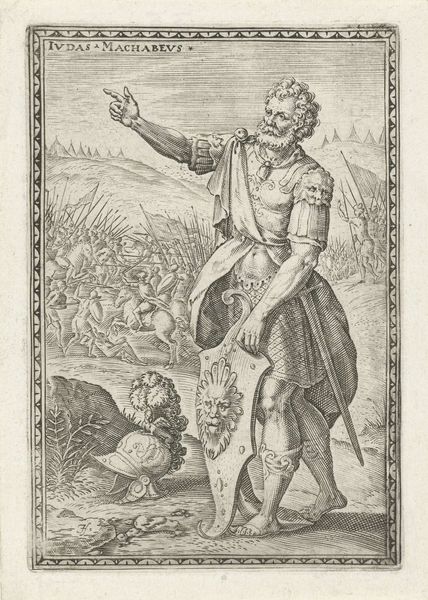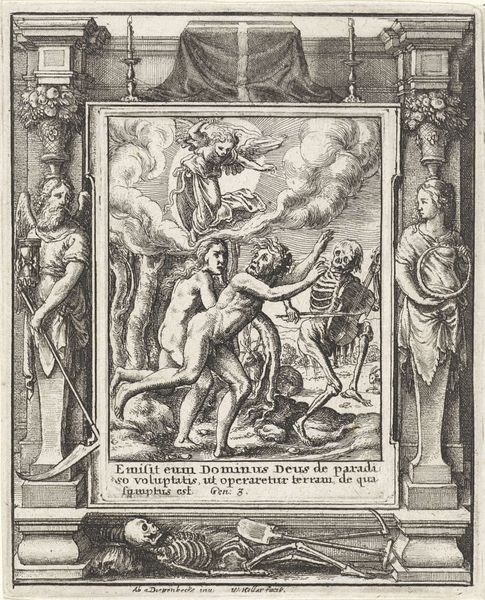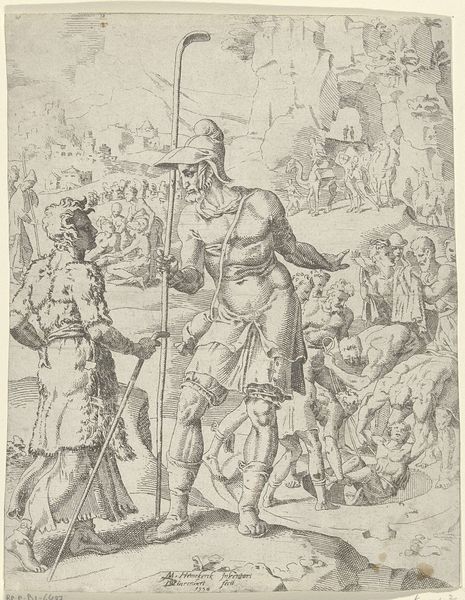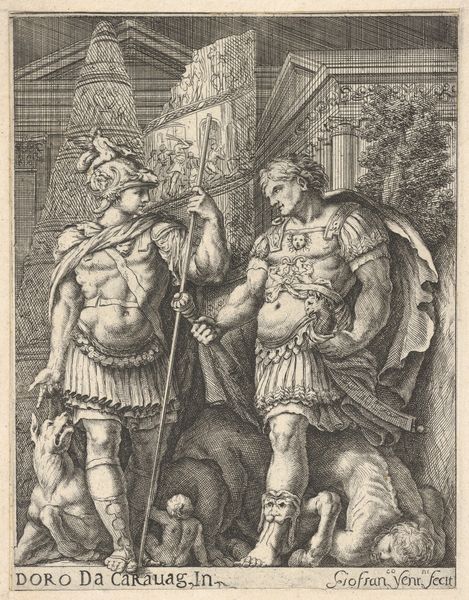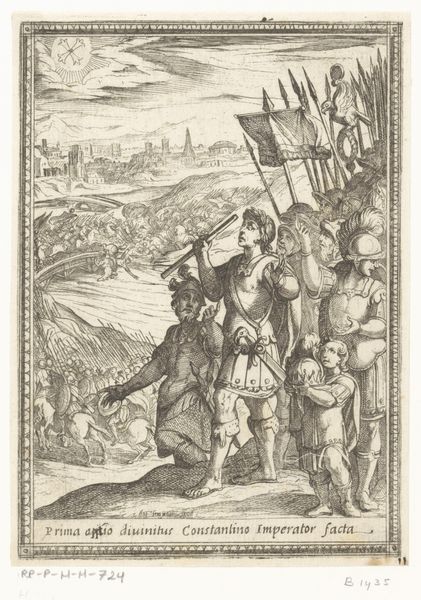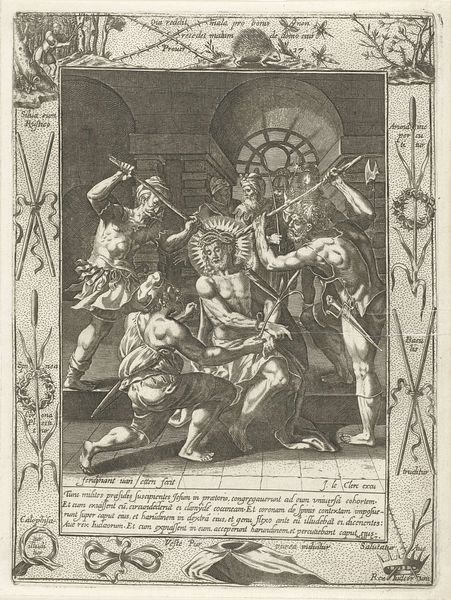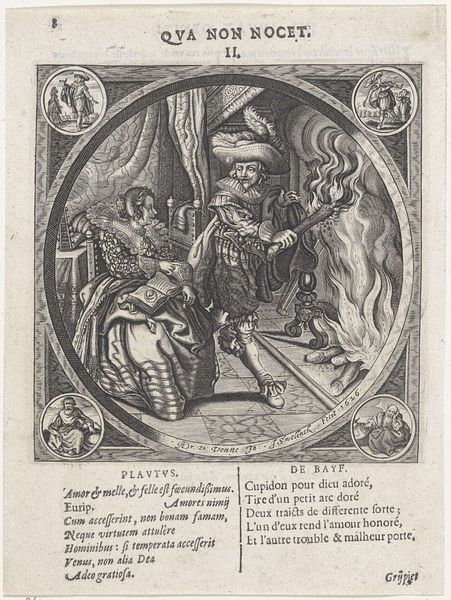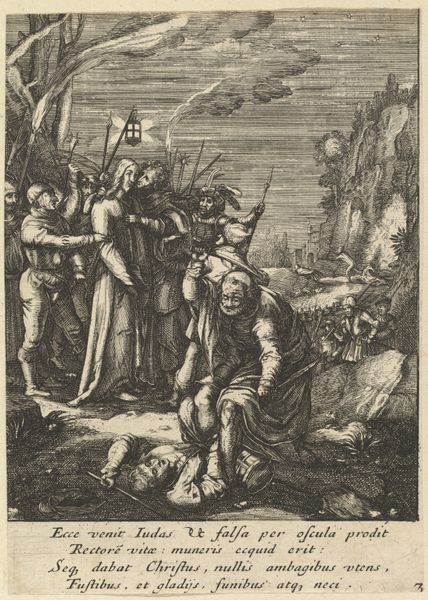
print, engraving
#
portrait
#
allegory
#
baroque
#
pen drawing
# print
#
figuration
#
vanitas
#
line
#
history-painting
#
engraving
Dimensions: height 115 mm, width 95 mm, height 77 mm, width 55 mm
Copyright: Rijks Museum: Open Domain
This print, ‘The Knight and Death,’ was made by Wenceslaus Hollar in 1651, using etching. This process involves coating a metal plate with wax, scratching an image into it, and then submerging the plate in acid, which bites away the exposed lines. You can see the fine, precise lines of this technique throughout the composition, from the knight’s armor to the skeletal figure of Death. The density of these etched lines creates areas of shadow and depth, giving the scene a palpable sense of drama. The material qualities of the print – its ink, its paper, its very reproducibility – were perfectly suited to the dissemination of images during this period, as was its stark symbolism. It would have been relatively easy to make many copies of this print, in effect democratizing the image. Consider the contrast between the wealthy knight, in his elaborate armor, and the relative affordability of this memento mori. Hollar here reminds us that death comes for us all, regardless of social class or earthly status.
Comments
No comments
Be the first to comment and join the conversation on the ultimate creative platform.
